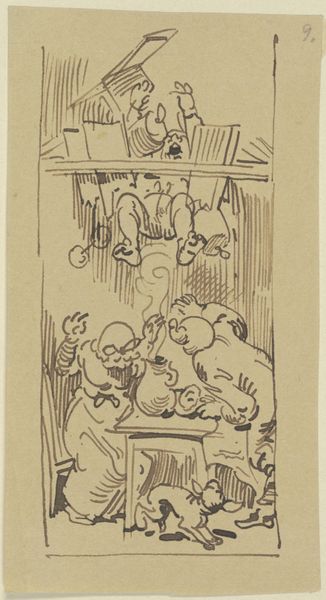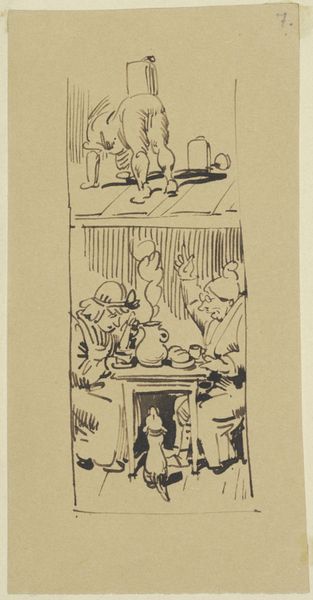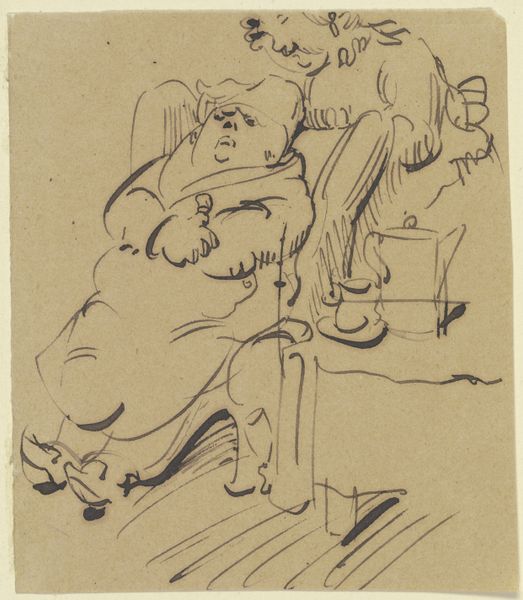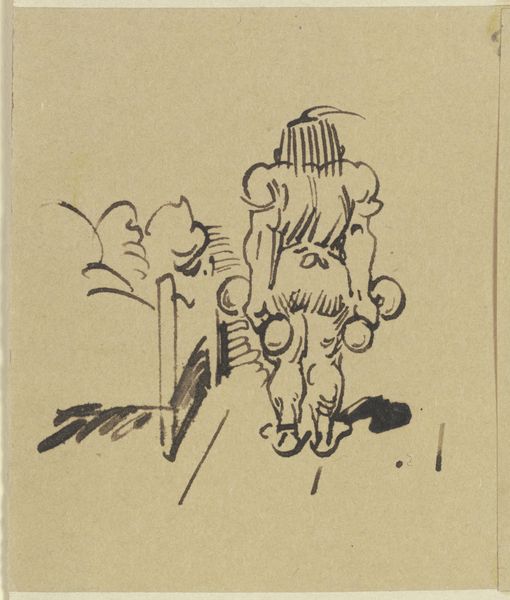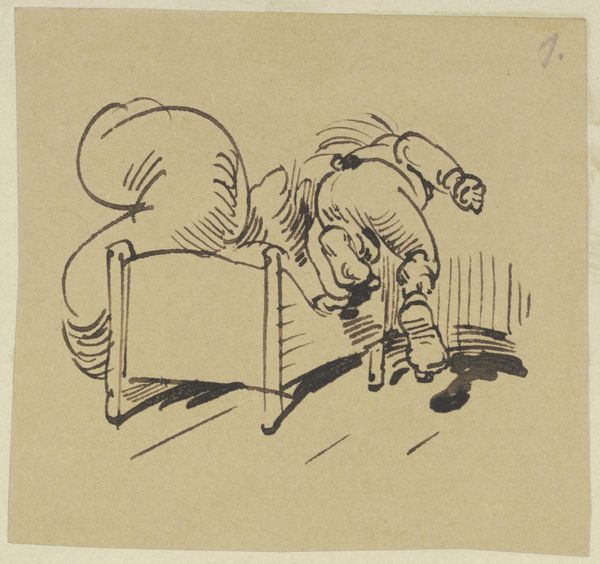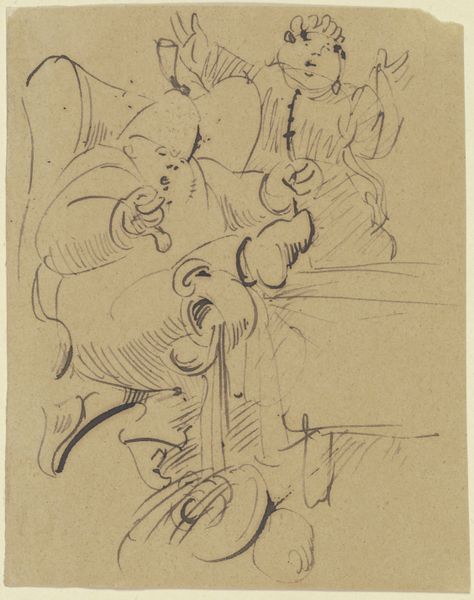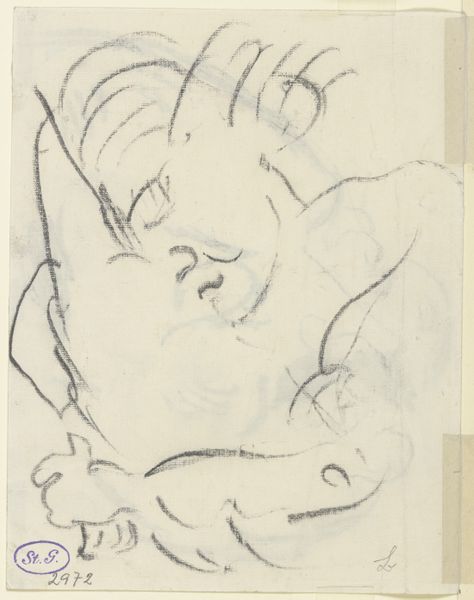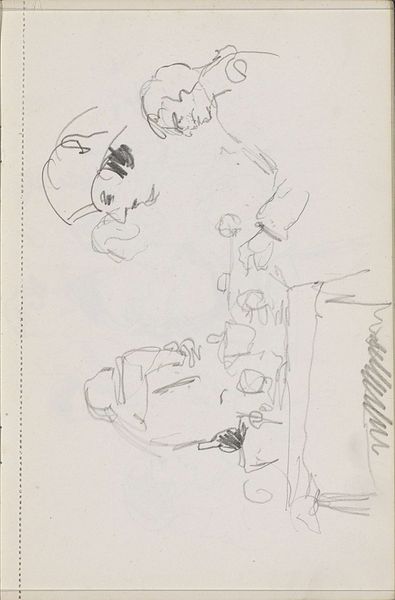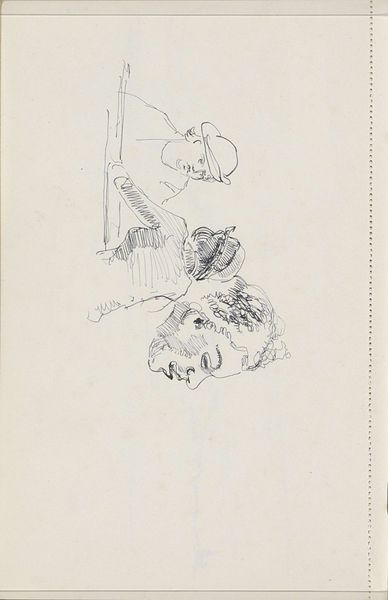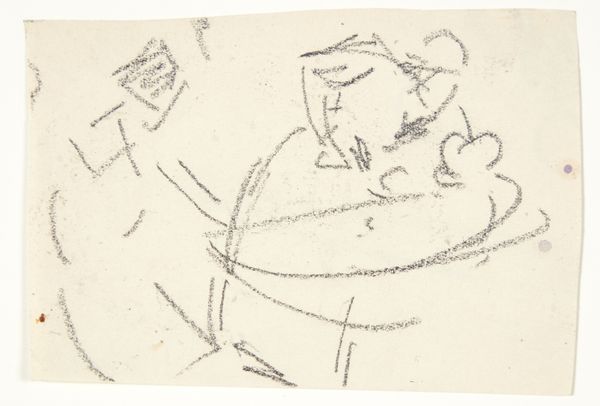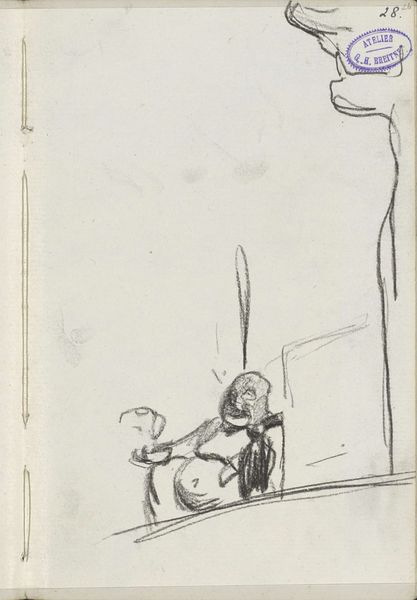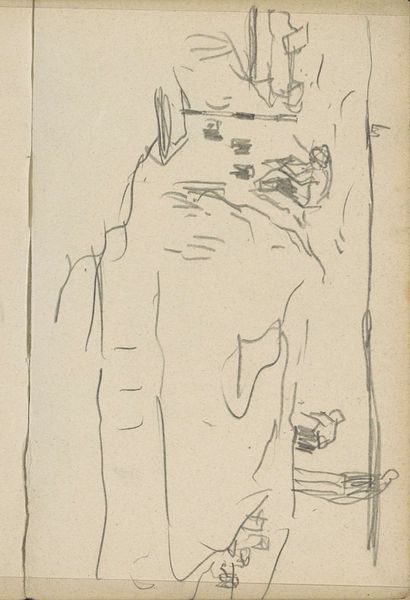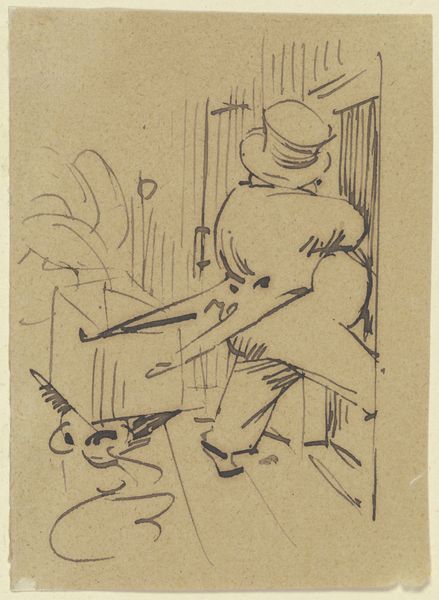
Copyright: Public Domain
Curator: Here we have Wilhelm Busch’s “Frau Knopp Serviert Ihrem Mann Kaffee,” a drawing from 1876 held at the Städel Museum. It’s an ink drawing, quite simple in its materials. What do you think when you look at it? Editor: It makes me smile. There’s a kindness to it, but also something subtly mocking in the husband's complete, almost bovine, acceptance of the offered coffee. I see a comfortable domesticity rendered with such quick, humorous strokes. It's got a very light and easy feel to it. Curator: Busch, as we know, often satirized bourgeois life, so I'd say your first impression tracks. Look at the lines—so economical. Notice how Busch suggests form and volume with just a few flicks of his pen. The accessibility of the materials—ink, paper—speaks to the democratization of art production at this time. Anyone with a pen could become a social critic, or at least record their observations. Editor: And that informality...It reminds me of doodles in a sketchbook. A fleeting moment, but one infused with warmth. What intrigues me most is what’s unsaid, what isn’t shown. The power dynamics implied in that seemingly simple act of serving coffee are like little narratives itching to get out, don't you think? It looks like it could almost come out of a cartoon or some comic strip. Curator: Absolutely! It’s worth thinking about how the mass production of illustrated papers influenced artists like Busch. He's really thinking about distribution. His drawings were not intended to hang in a salon; they were designed to be reproduced and consumed widely, to instigate discussion among everyday people. It's genre painting made for the modern age, leveraging both German Expressionism and comedic undertones. Editor: That's wonderful—to consider art as something accessible, a spark for conversation. And maybe that's why I connect to it; the humor is a disarming entry point into something more profound about relationships, routine, and the subtle theatre of everyday life. I think that Busch understood this very well. It definitely brings a wry smile to my face, that is for sure. Curator: Well, it makes you think about the everyday processes and social conditions under which images are consumed. These lines show a material insight as well. Editor: And that quiet moment between husband and wife—sometimes a coffee cup holds more significance than we give it credit for!
Comments
No comments
Be the first to comment and join the conversation on the ultimate creative platform.
